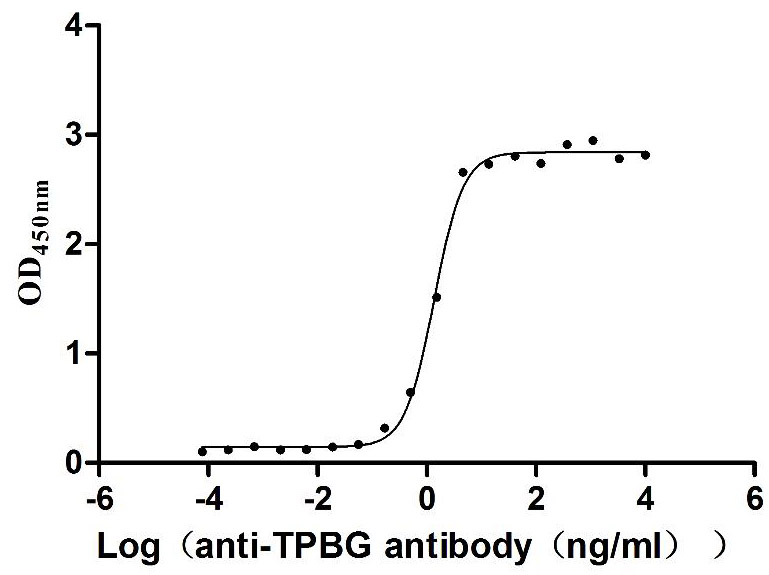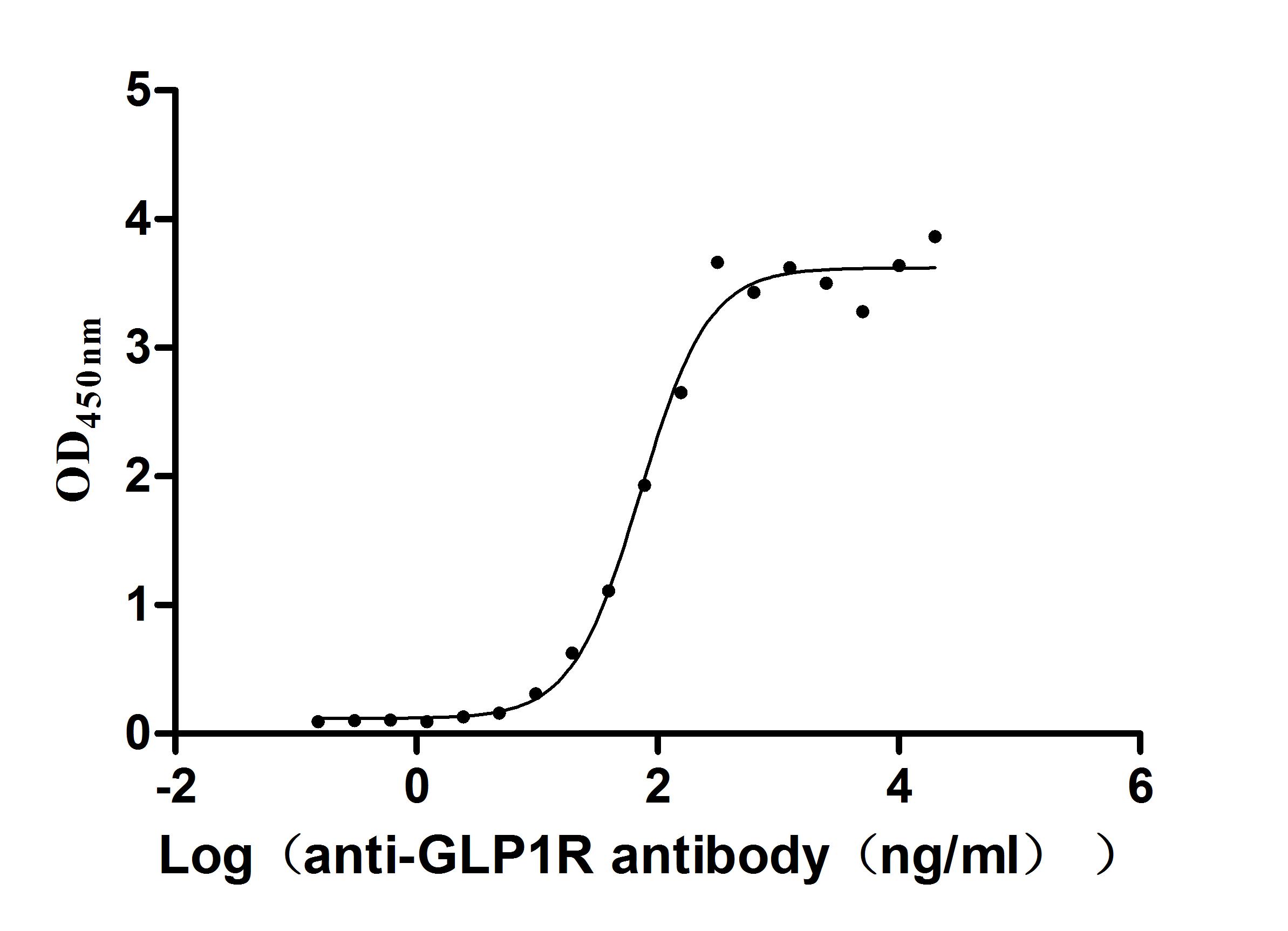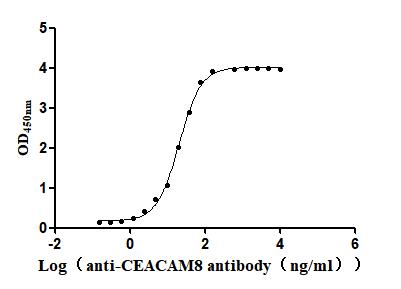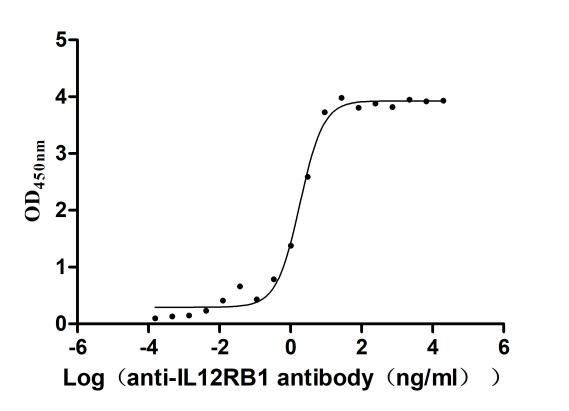Recombinant Human E3 ubiquitin-protein ligase RFWD3 (RFWD3)
-
中文名稱:人RFWD3重組蛋白
-
貨號:CSB-EP744106HU-B
-
說明書:
-
規格:
-
來源:E.coli
-
共軛:Avi-tag Biotinylated
E. coli biotin ligase (BirA) is highly specific in covalently attaching biotin to the 15 amino acid AviTag peptide. This recombinant protein was biotinylated in vivo by AviTag-BirA technology, which method is BriA catalyzes amide linkage between the biotin and the specific lysine of the AviTag.
-
其他:
產品詳情
-
純度:>85% (SDS-PAGE)
-
基因名:RFWD3
-
Uniprot No.:
-
別名:BC027246; E3 ubiquitin protein ligase RFWD3; E3 ubiquitin-protein ligase RFWD3; FLJ10520; MGC27888; RFWD3; RFWD3_HUMAN; Ring finger and WD repeat domain 3; RING finger and WD repeat domain containing protein 3; RING finger and WD repeat domain-containing protein 3; RING finger protein 201; RNF201
-
種屬:Homo sapiens (Human)
-
蛋白長度:full length protein
-
表達區域:1-774
-
氨基酸序列MAHEAMEYDV QVQLNHAEQQ PAPAGMASSQ GGPALLQPVP ADVVSSQGVP SILQPAPAEV ISSQATPPLL QPAPQLSVDL TEVEVLGEDT VENINPRTSE QHRQGSDGNH TIPASSLHSM TNFISGLQRL HGMLEFLRPS SSNHSVGPMR TRRRVSASRR ARAGGSQRTD SARLRAPLDA YFQVSRTQPD LPATTYDSET RNPVSEELQV SSSSDSDSDS SAEYGGVVDQ AEESGAVILE EQLAGVSAEQ EVTCIDGGKT LPKQPSPQKS EPLLPSASMD EEEGDTCTIC LEQWTNAGDH RLSALRCGHL FGYRCISTWL KGQVRKCPQC NKKARHSDIV VLYARTLRAL DTSEQERMKS SLLKEQMLRK QAELESAQCR LQLQVLTDKC TRLQRRVQDL QKLTSHQSQN LQQPRGSQAW VLSCSPSSQG QHKHKYHFQK TFTVSQAGNC RIMAYCDALS CLVISQPSPQ ASFLPGFGVK MLSTANMKSS QYIPMHGKQI RGLAFSSYLR GLLLSASLDN TIKLTSLETN TVVQTYNAGR PVWSCCWCLD EANYIYAGLA NGSILVYDVR NTSSHVQELV AQKARCPLVS LSYMPRAASA AFPYGGVLAG TLEDASFWEQ KMDFSHWPHV LPLEPGGCID FQTENSSRHC LVTYRPDKNH TTIRSVLMEM SYRLDDTGNP ICSCQPVHTF FGGPTCKLLT KNAIFQSPEN DGNILVCTGD EAANSALLWD AASGSLLQDL QTDQPVLDIC PFEVNRNSYL ATLTEKMVHI YKWE
-
蛋白標簽:Tag?type?will?be?determined?during?the?manufacturing?process.
The tag type will be determined during production process. If you have specified tag type, please tell us and we will develop the specified tag preferentially. -
產品提供形式:Lyophilized powder Warning: in_array() expects parameter 2 to be array, null given in /www/web/cusabio_cn/public_html/caches/caches_template/default/content/show_product_protein.php on line 662
Note: We will preferentially ship the format that we have in stock, however, if you have any special requirement for the format, please remark your requirement when placing the order, we will prepare according to your demand. -
復溶:We recommend that this vial be briefly centrifuged prior to opening to bring the contents to the bottom. Please reconstitute protein in deionized sterile water to a concentration of 0.1-1.0 mg/mL.We recommend to add 5-50% of glycerol (final concentration) and aliquot for long-term storage at -20℃/-80℃. Our default final concentration of glycerol is 50%. Customers could use it as reference.
-
儲存條件:Store at -20°C/-80°C upon receipt, aliquoting is necessary for mutiple use. Avoid repeated freeze-thaw cycles.
-
保質期:The shelf life is related to many factors, storage state, buffer ingredients, storage temperature and the stability of the protein itself.
Generally, the shelf life of liquid form is 6 months at -20°C/-80°C. The shelf life of lyophilized form is 12 months at -20°C/-80°C. -
貨期:Delivery time may differ from different purchasing way or location, please kindly consult your local distributors for specific delivery time.Note: All of our proteins are default shipped with normal blue ice packs, if you request to ship with dry ice, please communicate with us in advance and extra fees will be charged.
-
注意事項:Repeated freezing and thawing is not recommended. Store working aliquots at 4°C for up to one week.
-
Datasheet :Please contact us to get it.
相關產品
靶點詳情
-
功能:E3 ubiquitin-protein ligase required for the repair of DNA interstrand cross-links (ICL) in response to DNA damage. Plays a key role in RPA-mediated DNA damage signaling and repair. Acts by mediating ubiquitination of the RPA complex (RPA1, RPA2 and RPA3 subunits) and RAD51 at stalled replication forks, leading to remove them from DNA damage sites and promote homologous recombination. Also mediates the ubiquitination of p53/TP53 in the late response to DNA damage, and acts as a positive regulator of p53/TP53 stability, thereby regulating the G1/S DNA damage checkpoint. May act by catalyzing the formation of short polyubiquitin chains on p53/TP53 that are not targeted to the proteasome. In response to ionizing radiation, interacts with MDM2 and enhances p53/TP53 ubiquitination, possibly by restricting MDM2 from extending polyubiquitin chains on ubiquitinated p53/TP53.
-
基因功能參考文獻:
- The results suggest that RPA phosphorylation enhances the recruitment of PRP19 to RPA-ssDNA and stimulates RPA ubiquitylation through a process requiring both PRP19 and RFWD3, thereby triggering a phosphorylation-ubiquitylation circuitry that promotes ATR activation and homologous recombination. PMID: 28666352
- Single point mutations in the RPA32 subunit of RPA that abolish interaction with RFWD3 also inhibit interstrand crossling repair, demonstrating that RPA-mediated RFWD3 recruitment to stalled replication forks is important for ICL repair. PMID: 28575657
- E3 ligase RFWD3 functions in timely removal and degradation of RPA and RAD51 to allow homologous recombination progression to subsequent steps following mitomycin C damage. PMID: 28575658
- RFWD3-dependent ubiquitination of RPA regulates repair at stalled replication forks. PMID: 26474068
- RFWD3 and RPA2 functionally interact and participate in replication checkpoint control PMID: 21504906
- RFWD3 is recruited to sites of DNA damage and facilitates RPA-mediated DNA damage signaling and repair PMID: 21558276
- Study identifies RFWD3 as a positive regulator of p53 stability when the G(1) cell cycle checkpoint is activated and provides an explanation for how p53 is protected from degradation in the presence of high levels of Mdm2. PMID: 20173098
顯示更多
收起更多
-
相關疾病:Fanconi anemia, complementation group W (FANCW): A disorder affecting all bone marrow elements and resulting in anemia, leukopenia and thrombopenia. It is associated with cardiac, renal and limb malformations, dermal pigmentary changes, and a predisposition to the development of malignancies. At the cellular level it is associated with hypersensitivity to DNA-damaging agents, chromosomal instability (increased chromosome breakage) and defective DNA repair (PubMed:28575657). The disease is caused by mutations affecting the gene represented in this entry.
-
亞細胞定位:Nucleus. Nucleus, PML body. Cytoplasm.
-
數據庫鏈接:
Most popular with customers
-
Recombinant Human papillomavirus type 16 Protein E7 (E7) (Active)
Express system: E.coli
Species: Human papillomavirus type 16
-
Recombinant Human Microtubule-associated protein tau (MAPT) (Active)
Express system: Mammalian cell
Species: Homo sapiens (Human)
-
Recombinant Human Trophoblast glycoprotein (TPBG), partial (Active)
Express system: Mammalian cell
Species: Homo sapiens (Human)
-
Recombinant Human Glucagon-like peptide 1 receptor (GLP1R), partial (Active)
Express system: Mammalian cell
Species: Homo sapiens (Human)
-
Recombinant Human Dickkopf-related protein 1 (DKK1) (Active)
Express system: Mammalian cell
Species: Homo sapiens (Human)
-
Recombinant Human Carcinoembryonic antigen-related cell adhesion molecule 8(CEACAM8) (Active)
Express system: Mammalian cell
Species: Homo sapiens (Human)
-
Recombinant Human Interleukin-12 receptor subunit beta-1(IL12RB1),partial (Active)
Express system: Mammalian cell
Species: Homo sapiens (Human)



-AC1.jpg)


-AC1.jpg)











